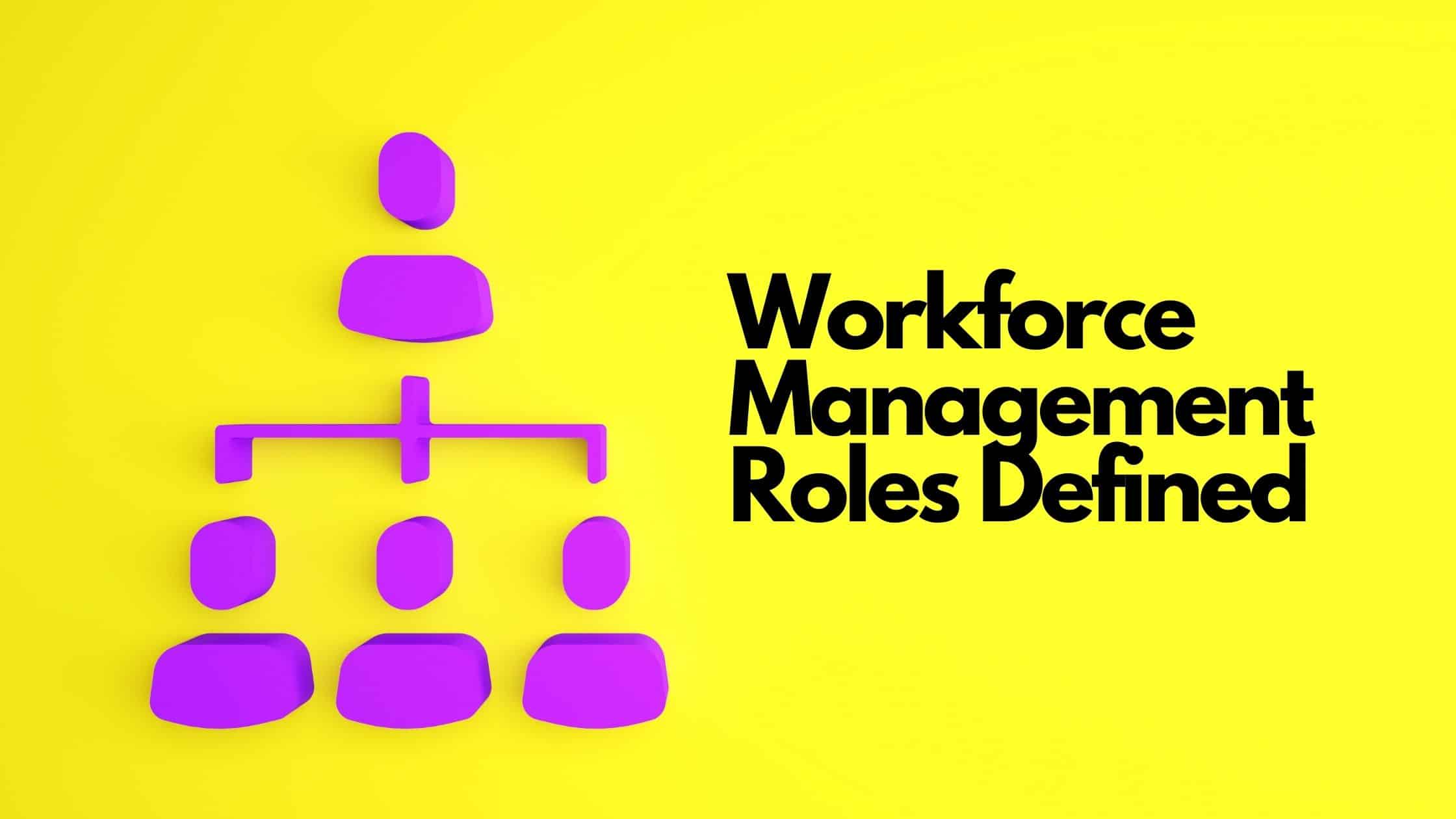The goals of your organization will determine the structure and roles of your Workforce Management Department. However, there are a few key concepts to consider when thinking about how your team should look. This post will provide an overview of the five main types of workforce management roles: Real-Time Analyst, Workforce Management Scheduler, Forecasting and Planning Manager, Reporting and Analytics, and Head of Workforce Management so that you have a better idea of what each role entails!
First, you need to think about the career path that will allow your team to grow their careers. For example, suppose you start by hiring someone who has experience in real-time management. In that case, they may eventually move on to scheduling or forecasting depending on their interest and skill set. Second, what are the desired operational outcomes the team can help drive? Finally, what are the efficiency gains that would most benefit the organization? Here are the common roles found in a Workforce Management team and the benefits each function brings to the organization.
What Is a Real-Time Analyst Role in a Workforce Management Department?
An entry-level role in a Workforce Management department is a Real-Time Analyst (RTA). The RTA supports the organization by monitoring, reporting, and adjusting the employee’s scheduled activities to ensure operations delivers on their KPIs. Additionally, the RTAs identify opportunities to improve efficiency.
The Real-Time Analyst is responsible for monitoring the workforce to ensure optimal utilization. Their responsibilities include monitoring real-time production, workforce adjustments as required by fluctuations in demand. RTAs make real-time exception updates and provide intra-day reporting to operations. As a result, RTAs help operations deliver on targeted results, objectives, and key performance indicators.
Workforce Management Scheduler Role
Another common role in a Workforce Management team is the Scheduler. They are focused on the daily staffing requirements to ensure they have the right number of employees scheduled on any given day to meet the operational goals. In addition, they plan for absenteeism, meeting and training requirements, offline time, and coaching sessions. This function requires strong analytical expertise and some creativity to develop schedules and coverage that meet the needs of the organization and employees.
Additionally, the Workforce Management Scheduler role serves as a lead advisory resource and assists the Forecasting and Planning Manager with developing and executing strategic operations forecast and optimal scheduling plans. The scheduler partners with Recruiting, Training, and Operations teams to execute hiring plans and monitor attrition trends and risks.
Forecasting and Planning Manager Role in Workforce Management
The Forecasting and Planning Managers role is responsible for forecasting production requirements based on operational goals. They examine the data and answer the following questions:
- What are the client deliverable goals?
- What are the production trends?
- Is there seasonality or one-time events that need considering?
- How are the productivity trends changing, and what is the resulting impact on the future forecast?
- How long are employees taking to complete the tasks needed to produce the desired outcome?
- What optimization measures are available?
Workforce Management Forecasting and Planning Managers are critical because they predict deliverable volumes needed by channels, productivity trends, and non-productive time which drives workforce requirements. As a result, they anticipate the workforce needs to achieve operational excellence.
Reporting and Analytics Roles Within a Workforce Management Department
Reporting and analytics roles provide Workforce Management teams and Operations with the data they need to manage the business effectively. Therefore, the reporting function is critical to the success of the Workforce Management team. Reporting and Analytics provide workforce management teams with data that includes: comprehensive historical data for forecasting, productivity trending, performance analysis, outlier analysis, and business insights.
Head of Workforce Management
The Head of Workforce Management is a strategic business leader responsible for building, managing, and owning workforce management strategy, process, and execution across the organization. This role is fully accountable for ensuring operations are set up to achieve contractual and regulatory requirements through maximized utilization and scheduling of resources. In addition, the Head of Workforce Management provides leadership and expertise on long-term operations, budgeting, capacity planning, processes, and tool development to optimize the staffing strategy.
The services and support offered by the Workforce Management team are invaluable to meeting operational and organizational goals. First, their value starts with forecasting from historical data balanced with what is required to meet the current and future needs of the business. Second, the scheduling role is critical to ensure the right people are doing the right tasks at the right time. Next, real-time analyst roles ensure that operations are running as expected and smoothly. Above all, each of the workforce management role fosters an environment of customer-centricity, collaboration, and employee development.
Last updated on September 16th, 2021 at 08:09 am


